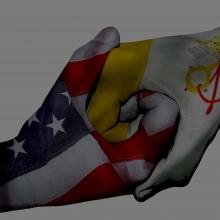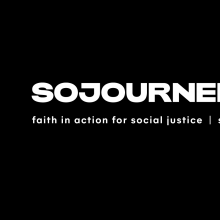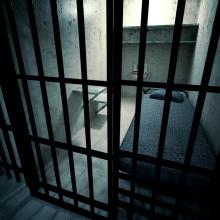African American
A Black church in California has set out to develop a microgrid that could generate up to $1 million annually. The project, spearheaded by Gemini Energy Solutions and Green The Church, is part of a larger effort to empower Black churches — and their communities — to join the clean energy movement.
In the black community, voting has always been complicated.
We voted and yet you lynched us.
We voted and yet you incarcerated us.
We voted and you poisoned our water.
The backlash to gospel singer Kim Burrell’s homophobic rant was swift: canceled national television appearances and the termination of her local public radio show.
But to those of us in religious communities, it’s important to note that, even as the controversy over Burrell’s statement recedes from the national spotlight, the issue of what goes on in the vast majority of American churches remains a festering wound.
With its new full-length, animated feature Moana, Disney Studios expands the ethnic and religious diversity in its heroines, in this case with a spirited Polynesian girl, played by Auli’i Cravalho, who is a native Hawaiian. The film is the latest in the lucrative princess franchise that began in 1937, with Snow White and the Seven Dwarfs, and was enhanced over the decades with films like Sleeping Beauty and Cinderella.
Moana finished No. 1 at the box for the third weekend in a row, earning $145 million since opening over the Thanksgiving weekend.

Andrey Bayda / Shutterstock
IN 2000, sophomore Onaje X.O. Woodbine was Yale basketball’s leading scorer and one of the top 10 players in the Ivy League. From the outside it must have seemed like a dream come true for a young man who grew up playing street ball in the Roxbury neighborhood of Boston.
But Woodbine felt isolated and excluded by the white players on the team, troubled by what he’s described as “a locker-room culture that encouraged misogyny,” and hungry to focus on his studies and wrestle with deeper philosophical and theological questions. So he quit basketball.
Woodbine eventually returned to the courts of his youth as a researcher, studying the practice and culture of street basketball for his doctoral studies in religion at Boston University. Woodbine is the author of Black Gods of the Asphalt: Religion, Hip-Hop, and Street Basketball (Columbia University Press) and a teacher of philosophy and religious studies at Phillips Academy in Andover, Mass. He spoke with Sojourners senior associate editor Julie Polter in May.
Julie Polter: What led you to study street basketball from a religion scholarship angle?
Onaje X.O. Woodbine: When I was 12 years old, I lost my coach. He was my father figure; I didn’t have my father for most of my early childhood. It was just devastating.
I went to the court the next day to look for him. I felt his presence in that space. It was really the only place, looking back, where I felt safe, I felt whole, where I felt like my inner life was valuable, where there was a whole community whose interest was in my growth as a human being.

Image via MattiaATH/Shutterstock
When President Obama meets with Pope Francis tomorrow, the world will catch a glimpse of what history looks like. The first pope from the global South in 1200 years will be welcomed in the White House by the first African-American president of the United States. This picture will be worth far, far more than a thousand words.
Pundits will analyze each public word spoken, and search for hints about the private words exchanged between these two. The politics of Pope Francis’ interaction with the President, and later with Congress, will fuel incessant speculation from Washington’s insiders. But around the world, and particularly in the global South, it’s the symbol of this meeting which will matter.
Pope Francis represents the changing face of world Christianity. Today, one billion Christians are found in Latin America and Africa. In 1980, more Christians were found in the global South than in the North for the first time in a thousand years. Every day, that movement accelerates. Francis’ words about the world’s injustices, and his actions of humble human solidarity, project the voice and longings of world Christianity’s new majority and resonant far beyond the boundaries of this faith.
President Obama symbolizes the changing demographics of America. Hope and demographics elected him in 2008, and by 2012 the changing face of the electorate in the U.S. proved determinative of America’s political future. Today, a majority of babies born in the U.S. are non-white, and some major urban areas already reflect the coming reality of a society without a racial majority.
[W]hen I was in junior high, I decided I wanted to become the first black woman ordained in the Lutheran Church. ... At Wesley I enjoyed being a student again, until one of the black seminarians asked, “How can you be black and be Lutheran?” I didn’t know. I had never thought about it. The Lutheran Church is predominantly white, ethnically German and Scandinavian. It is highly structured and without the display of lively emotions most blacks are used to in their religious experiences. The Lutheran Church was the only church I had ever really known, and yet suddenly I was thrust into an identity crisis that really rocked me.
During his 1930-31 fellowship at Union Theological Seminary in New York City, German theologian Dietrich Bonhoeffer joined his African American classmate Albert Fisher as a regular attendee at Abyssinian Baptist Church in Harlem.
WHEN BONHOEFFER entered Harlem with Fisher, he met a counternarrative to the white racist fiction of black subhumanity. The New Negro movement radically redefined the public and private characterization of black people. A seminal moment in African American history had arrived, and all of Bonhoeffer’s descriptions of his involvement in African American life during his Sloane Fellowship year occurred during this critical movement. He turned 25 that February. Bonhoeffer was experiencing that critical moment in African American history while he was still young and impressionable.
The New Negro, a book containing a collection of essays, was edited by one of the leading intellectual architects of the movement, Alain Locke. The New Negro, as Locke and his authors appropriated the term, described the embrace of a contradictory, assertive black self-image in Harlem to deflect the negative, dehumanizing historical depictions of black people. The New Negro made demands, not concessions: “demands for a new social order, demands that blacks fight back against terror and violence, demands that blacks reconsider new notions of beauty, demands that Africa be freed from the bonds of imperialism.” Bonhoeffer knew the movement by the descriptor New Negro, but James Weldon Johnson preferred to describe the movement as the Harlem Renaissance ... as a rebirth of black people rather than something completely new. ...
THROUGH THEIR EYES
In 2011, Raul Guerrero provided 100 Kodak disposable cameras and taught basic photography skills to nine young students in the Newlands area of Moshi, Tanzania. The Disposable Project book brings together their images of their community, with text by Guerrero. the-disposable-project.com
JOURNEYING
“Migration has been, for centuries, not only a source of controversy but a source of blessing,” Deirdre Cornell writes in Jesus Was a Migrant. Inspired by ministering among immigrants in different settings, this is a beautifully written set of deeply humanizing reflections on the immigrant experience and Christian spirituality. Orbis Books
AFRICAN AMERICANS around the country are finding it is dangerous to call 911. Jack Lamar Roberson’s family in Waycross, Ga., discovered this the hard way when they placed an urgent call to 911 in October 2013 because his fiancée thought that he had taken an overdose of diabetes medicine.
Instead of sending EMTs, the dispatcher sent the police. Within 20 seconds of being in the house, police shot Roberson nine times, with bullets striking his back, arms, chest, and head as he held his arms up in the air. Although he was a veteran, he did not die from bullet wounds at the hands of strangers in a foreign land. Instead, white police gunned him down in his home.
Killings like this—which could be called anti-black hate crimes by police—are far too common. “Operation Ghetto Storm,” a 2012 report by the Malcolm X Grassroots Project, revealed that white police officers, security guards, or vigilantes kill an unarmed black man, woman, or child every 28 hours in the U.S. In 2012, police officers shot 57 people in Chicago—50 were black, two were white. Miami police officers killed seven black men within eight months in 2011. The Houston-based African-American News & Issues headlined an article this spring: “Open Season on Blacks in Texas: Cops Are Shooting First & Not Asking Questions.”
These police killings of black people emerge out of a culture and system of white supremacy. In such a context, police killing of black people is not a black problem. It is an American problem that shreds the curtains of democracy.
There is a moment in John Steinbeck’s classic, East of Eden, when readers witness the transformation of a stereotype into a human being.
Set in Salinas Valley, Calif., around the turn of the 20th century, Samuel Hamilton picks up Lee, his friend's Chinese servant. Lee wears a queue and speaks Pidgin English. Moments after meeting him, Hamilton learns that Lee was born in the U.S. and asks why he still can’t speak English.
Lee’s face and eyes soften and he speaks perfect English, explaining that he speaks Pidgin for the whites in town to understand him. Lee says, “You see what is, where most people see what they expect.”
Did you catch that? Lee plays the role of the foreigner in order to be seen and understood.
NEARLY 50 YEARS ago, the U.S. Department of Labor issued one of the most controversial and influential reports of our time, “The Negro Family: The Case for National Action,” aka “The Moynihan Report,” named after its author Daniel Patrick Moynihan. The March 1965 report offered our nation’s first comprehensive look at the roots of poverty in the African-American community 100 years after the Civil War. The picture wasn’t pretty.
Pointing to black poverty’s roots, Moynihan started with the hell that was the U.S. slave system: “American slavery was profoundly different from, and in its lasting effects on individuals and their children, indescribably worse than, any recorded servitude, ancient or modern.” Going on to quote Nathan Glazer, Moynihan illuminated the absolute powerlessness and dehumanization of enslaved black people under antebellum law and within the social structures of slavery.
Moynihan went on to examine the impact of the Reconstruction period, urbanization, unemployment, and inequitable wages on African Americans’ economic station in U.S. society. He concluded that the single greatest result of these forces was black families’ demise. And the single greatest result of this demise was entrenched poverty, according to Moynihan.
A 2013 Urban Institute report, “The Moynihan Report Revisited,” reflected that in the early 1960s Moynihan was alarmed that 20 percent of black children lived in single parent households with their mothers (not their fathers), but by 2010, 20 percent of white families lived in such households while 53 percent of black children were being raised by their mothers. According to the Urban Institute, fatherlessness in the U.S. has gotten worse, and it is no respecter of race.
I first learned about President Obama’s comments about racism and the Trayvon Martin case last week when a Facebook friend posted a link with this comment:
“Full text of the American President’s divisive and racist remarks today. He moves smoothly into his new role as race-baiter in chief.”
My friend’s anger was matched by many others from PowerLine to Breitbart. But what I read seems to me as controversial as tomorrow’s sunrise and incendiary as wet newspaper.
Let me try an analogy.
Imagine that Joe Lieberman had been elected our first Jewish president. And that in a moment of crisis, he felt compelled to explain that some reaction to even the hint of anti-Semitism is partly explained by the Jewish cultural memory of the Holocaust. And he included personal anecdotes about growing up Jewish in America.
Would he be accused of being divisive and guilty of whatever the Jewish equivalent of “race-baiting” might be?
Fred Luter had a lot of firsts in the last year: first black president of the Southern Baptist Convention; first time chairing the denomination’s annual meeting, this week, in Houston; and recently, first-time missionary.
“It was inspirational, but also very humbling in a lot of instances, just to see how some people are living,” Luter said, days after returning from Ethiopia and Uganda.
Struck by the poor living without running water and by missionaries willing to “leave the comforts that we have here in America,” Luter wants more members ofhis New Orleans congregation — as well as more of the nation’s 16 million Southern Baptists — to take overseas missions seriously.
In particular, he wants more of his denomination’s relatively small black population to serve as missionaries.
WHEN U.S. POET Laureate Natasha Trethewey visited my day job at historically black Kentucky State University, she cleared up a couple of things about the honors and duties of her position. First she noted that, unlike her British counterpart, she does not receive a free cask of wine as part of her payment. But that’s okay, she says, because, unlike laureates of old, she also does not have to compose made-to-order poems to the glory of The State. The State should also be relieved at that, because Trethewey’s poetry, while obsessed with history and written in a plain-spoken and accessible style, also habitually exposes profoundly unsettling truths about us and our past, especially regarding race.
From her first book, Domestic Work, focused on the lives of working-class African Americans in the South, to her most recent, Thrall, which deals with images of interracial relationships from the 17th century to the present, Trethewey has focused her keen verbal gifts on the most sensitive nerve in American life. Trethewey comes by these obsessions naturally. She is the daughter of a white man, Eric Trethewey, himself a poet of some renown, and a black woman, Gwendolyn Turnbough, who was murdered when Trethewey was in college. Trethewey was born and grew up as a mixed-race child on the Mississippi Gulf Coast in the late 1960s and ’70s.
MARRIAGE IS A wonderful thing. Yet it seems to be taking a hit in our society, and I must say it is taking a hit in my community at rates I am very uncomfortable with as an African American.
My wife, Donna, and I have been working in ministry and missions for a long time, and we see our marriage as a key to our work. We live and work in the city in a mostly black neighborhood, and the percentage of married black couples is extremely low. Modeling a great marriage is something we take seriously and make very public. If we didn’t make our marriage and relationship public, some of the young people we know and work with would not know personally any happily married African-American couples.
It is our intent to live out our lives as a couple and family so others can see its beauty and challenge. Our community has upwards of 90 percent single-parent homes, with few dads present and even fewer marriages. Marriage is one of our greatest “testimonies” of God’s grace and love in our lives. How we love each other and our children is a important part of our work, so we are very intentional about the health of our marriage. This has given us the opportunity to love each other well.
A public manifestation of our marriage means we celebrate one another with friends as much as possible. We announce our date nights and trips we take together, and we publicize special days and anniversaries. We let people know how much we enjoy it being just the two of us, and we even disagree publicly so people know we are individuals and have our own opinions. It is our opinion that black children need to see and interact with healthy black couples.
Retired United Methodist Bishop Leontine T.C. Kelly, the first African-American woman elected to the episcopacy by a major religious denomination, died Thursday (June 28). The teacher, pastoral leader and activist was considered a pioneer for her ministry of more than two decades. She was 92.
Her death was reported by United Methodist News Service.
Bishop Judith Craig, who was elected a Methodist bishop just hours after Kelly in 1984, recalled the pioneer’s “audacious” life.
“She never ran from challenge or controversy, and she also stood fast in her convictions,” Craig told the denominational news service.
















